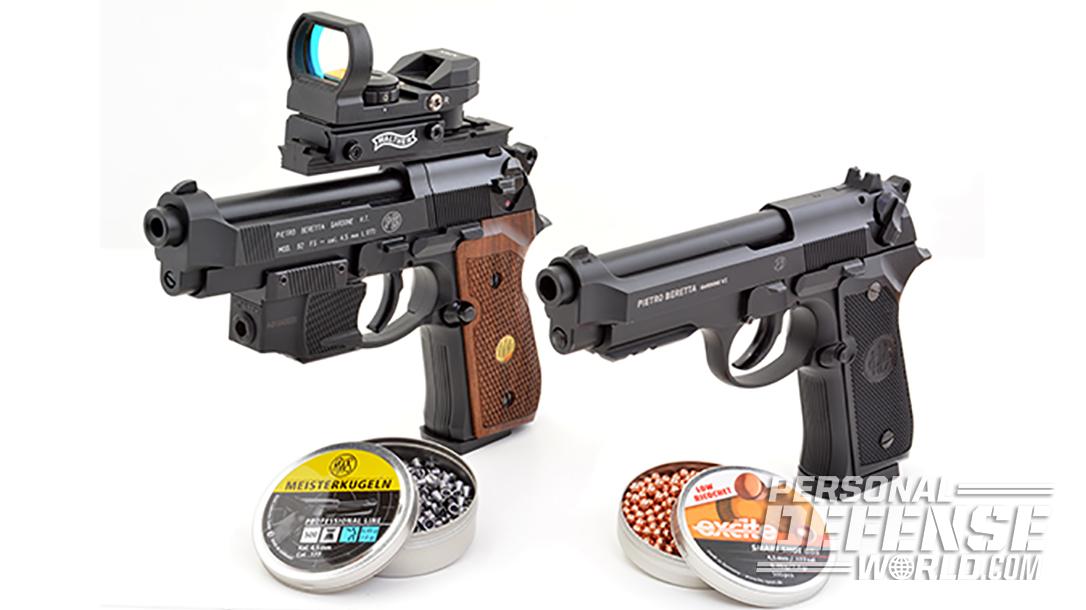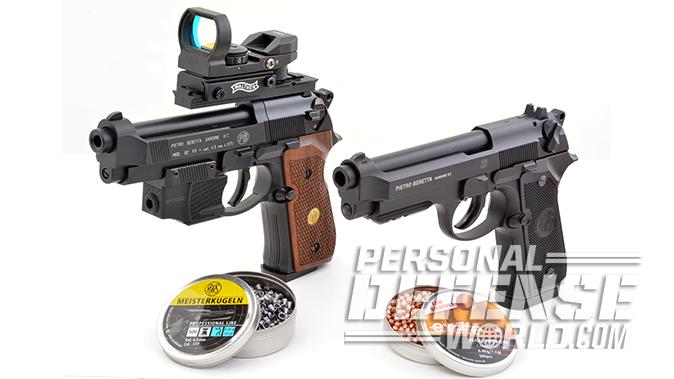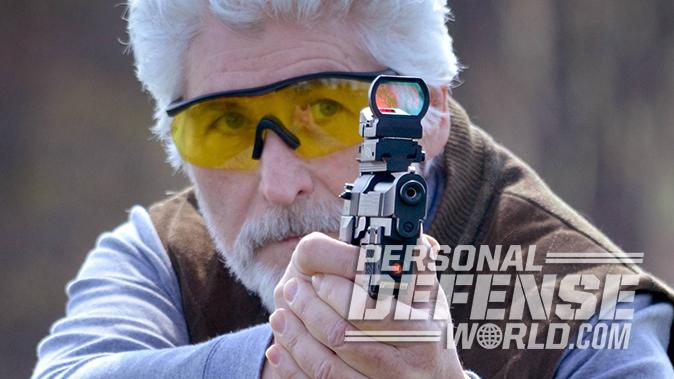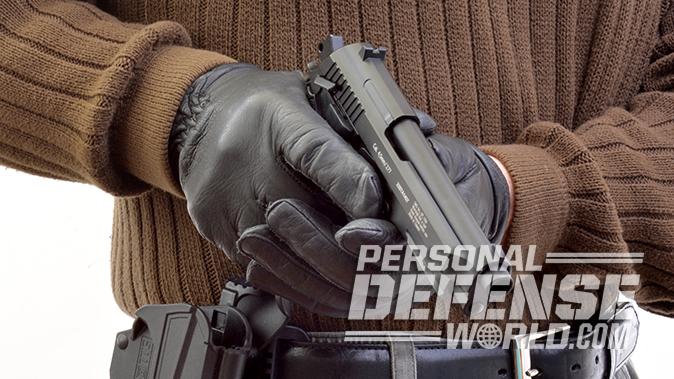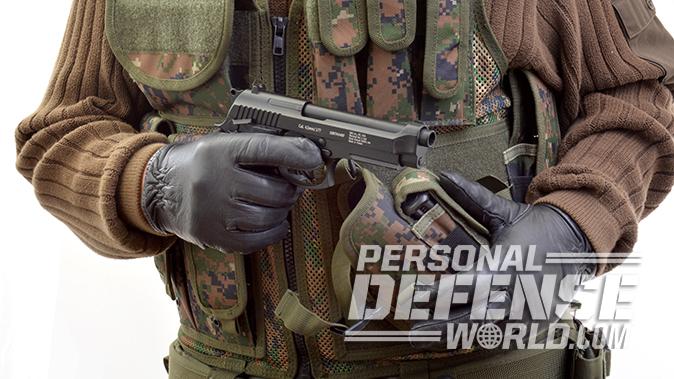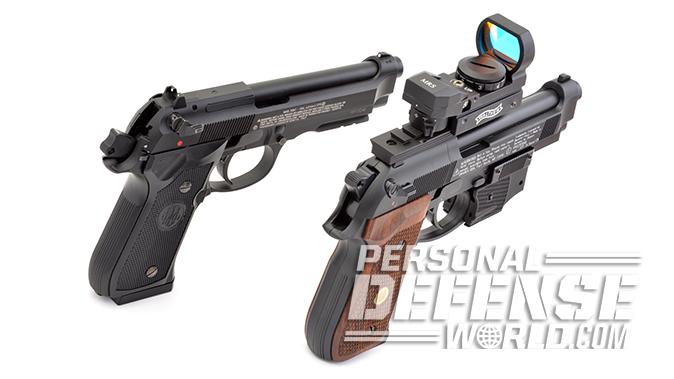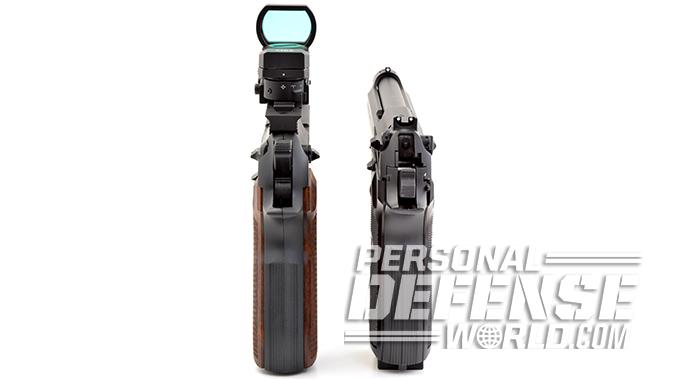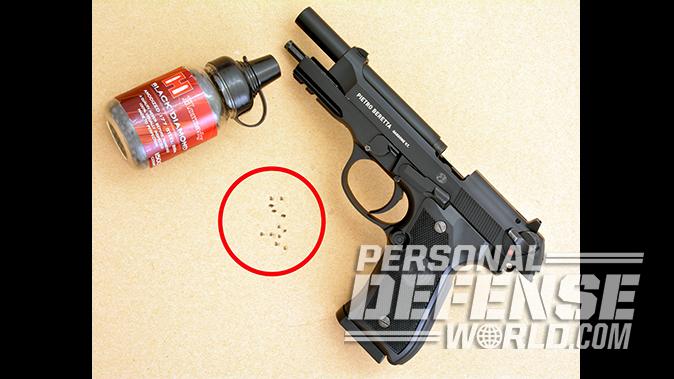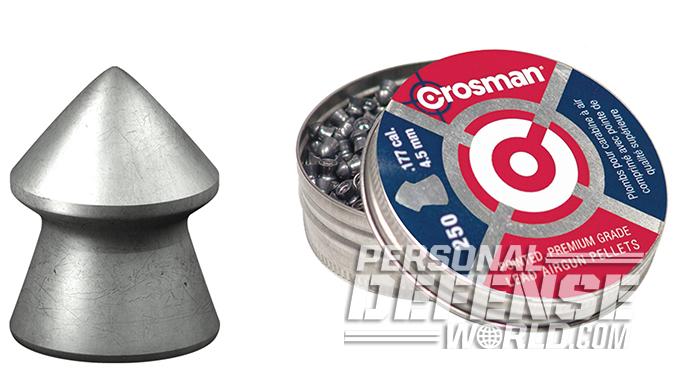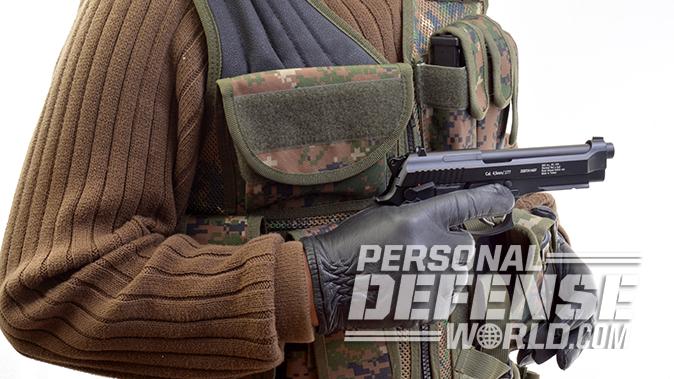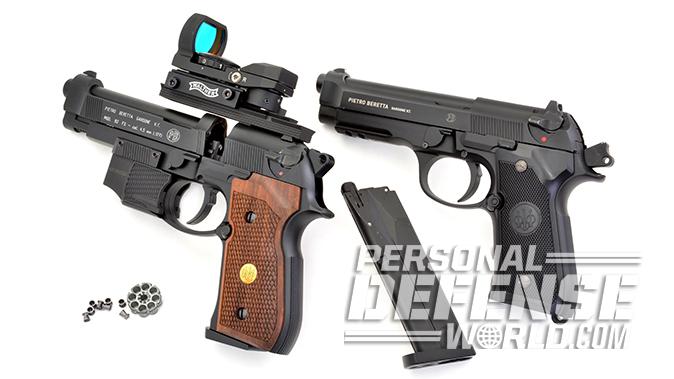Fifteen years ago when I wrote the first edition of the Blue Book of Airguns, one of the cover guns was a Beretta 92FS air pistol chambered for 4.5mm lead pellets. That gun is still available today and remains among the finest built pellet guns on the market. It’s also one of the more expensive with a list price of $329. Pellet-firing handguns have always been superior in performance to BB guns, and for most of the history of BB pistols the little lead .177-caliber balls were never capable of equaling the velocity and effectiveness (penetration and expansion) of a 4.5mm lead pellet.
The main reason was simply that pellets, not being limited to lead or steel spheres, could be designed in a variety of ways to achieve either greater accuracy for target shooting, higher velocity or penetration, the latter two for use in dispatching small varmints. Over the past 15 years, the technology that made pellet pistols superior has been adopted in the manufacturing of high-quality BB pistols. This resulted in commensurate levels of power between the platforms, a far higher level of quality through all-metal construction, and a fit and finish that give BB and pellet guns of the same model complete parity.
Advertisement — Continue Reading Below
This is evidenced by the two Beretta air pistols pictured, the 92FS pellet gun, with a 5-inch, rifled barrel and a Walther MRS electronic red-dot sight and a rail-mounted red laser, alongside the very latest Beretta semi-auto BB pistol, the Model 92A1, which was introduced in late 2015.
Burst Fire
The Model 92A1 is a variation of the cartridge-firing Beretta combined with a unique feature only found in the rare and long discontinued Beretta Model 93R, a select-fire variant. The original 93R was only produced for the Italian military and Italian law enforcement from 1979 to 1993. The burst-fire mechanism counted shots—after three rounds in rapid succession, the trigger had to be pulled again, thus eliminating the tendency to empty a full magazine with one pull of the trigger.
This same type of device is used in the latest Umarex-built Beretta Model 92A1. The selector, however, has been moved to the right side of the receiver. The 93R’s folding forward assist finger grip and extended 20-round capacity have been eliminated. The air pistol does, however, have a capacity of 26 steel BBs. The exterior changes take nothing away from the excitement of firing this all-metal and accurate copy of the Beretta 92A1 in its unique burst-fire mode.
Advertisement — Continue Reading Below
Details
In terms of handling, the 92A1 provides the exact feel and operation of controls as a 9mm model for firearms familiarization. This includes drawstroke, thumb safety release, sight acquisition as well as fire drills, reloading drills, both full and tactical reloads with spare magazines, and even mock clearing drills and second-strike practice. It even has the latest Beretta white-dot sights and a rounded triggerguard corresponding to the Model 92A1.
The double-action/single-action trigger works identically to the cartridge-firing model, with the first round fired in DA and the slide cycling back after discharge to cock the hammer and chamber the next BB. You can also cock and decock the gun manually. The air pistol uses a Beretta-style magazine. The magazine contains both the BBs and CO2 capsule in one unit, for the most authentic handling when reloading. All current holsters for the 92FS also fit the air pistol. For remedial training, you could not ask for a more accurate copy of the 92A1 cartridge pistol. Suggested retail is just $143 while extra magazines sell for $49.
At a range of 7 yards, firing the 92A1 with Hornady’s .177 Black Diamond BBs, a best group of 12 shots measured 1.77 inches and a best five measured 0.26 inches. The pistol’s trigger pull was consistent, measuring approximately 6.7 pounds in DA mode and 2.5 pounds in SA mode.
Advertisement — Continue Reading Below
Air Trainer
It is models like this latest example from Umarex that have leveled the playing field between BB pistols and pellet guns. That said, there remain certain advantages to the 4.5mm pellet gun over the more modern and technically accurate BB guns. All-metal construction is a standard with Umarex, and both Beretta pellet and BB guns share this same level of high-quality construction, fit and finish, balance and weight. The pellet-firing 92FS weighs in at 44 ounces and the BB-firing 92A1 at 40 ounces.
Pellet guns, however, operate on an entirely different system. The system requires using a cast-metal rotary magazine that contains (usually) eight .177 lead pellets. Internally, the operation of these air pistols, even though they are semi-automatic in appearance, is more akin to a revolver. The magazine rotates like a cylinder to bring each subsequent pellet into battery. In addition, the pellet gun does not have blowback action; the CO2 loads into the pistol grip and the rotary magazine at the breech after depressing the slide release. This allows the slide to move forward on the frame to insert the rotary magazine. Push the slide closed and you’re ready.
Advertisement — Continue Reading Below
As for a training gun, the pellet model Beretta 92FS has the feel and balance of the 9mm. It allows practice in sighting, trigger control and safety actuation. But there is no way to reload in the same fashion as the 92A1, which is virtually identical to a cartridge-firing pistol; thus, the downside of a pellet gun over a BB gun for step-by-step training purposes. For actual shooting, however, the results with a rifled-barrel pellet gun can be far more fulfilling.
BBs vs Pellets Range Test
The principal pellet design in use today is the diabolo shape, a pellet that is larger on both ends with a thin waist separating the pellet’s head from a hollow base skirt. This is an extremely efficient, self-stabilizing pellet design for improved velocity and accuracy. There are four primary pellet designs: wadcutter, pointed, round nose and hollow point. For the majority of pellet-firing handguns, wadcutters are the most commonly used for punching holes in paper, much like wadcutters are used for target shooting with cartridge-loading handguns. With pellet-firing air pistols, the wadcutter really excels for accuracy at the traditional 10-meter target distance.
That’s 33 feet, which is about 10 feet beyond the best accuracy generally attainable with modern blowback-action, semi-auto, BB air pistols, even the Beretta 92A1. Like bullets, pellets are available in different grades and for accuracy. Competition and match-grade pellets are the most desirable and most expensive compared to basic and hobby-grade pellets. Those generally cost much less (this can range from $7 a tin to as much as $40 for the best competition-grade pellets).
Advertisement — Continue Reading Below
Final Thoughts
With high-quality air pistols like the Beretta 92FS, a quality wadcutter like the RWS Meisterkugeln Professional Line will deliver excellent results at 10 meters, all for around $13 for a 500-round tin. Wadcutters generally have a 7- to 7.2-grain weight and are ideal for air pistols. Firing Meisterkugeln from the Beretta 92FS at 10 meters, the best eight-round group measured 0.75 inches, with a best five at 0.52 inches. By comparison, the 92FS averaged 425 fps with wadcutters. The 92A1 sent Hornady anodized steel BBs downrange at a 320-fps average.
A 100-plus fps difference between a CO2-powered, blowback-action BB gun and a CO2-powered pellet gun is a lot, and the pellet gun has a greater range, greater accuracy and greater options in pellet loads. As to which one to buy, both have excellent features and neither is prohibitively expensive. Nor are BBs, pellets and CO2. So which high-quality airgun should you choose? As the great New York Yankee legend Yogi Berra once said, “When you come to a fork in the road, take it.”
For More Information
Pyramyd Air
pyramydair.com
Advertisement — Continue Reading Below
Umarex
umarex.com
This article was originally published in “Combat Handguns” August 2016. To subscribe to that magazine, visit outdoorgroupstore.com.
